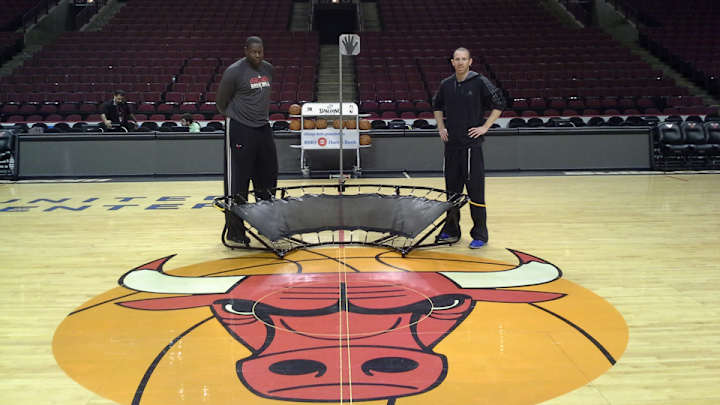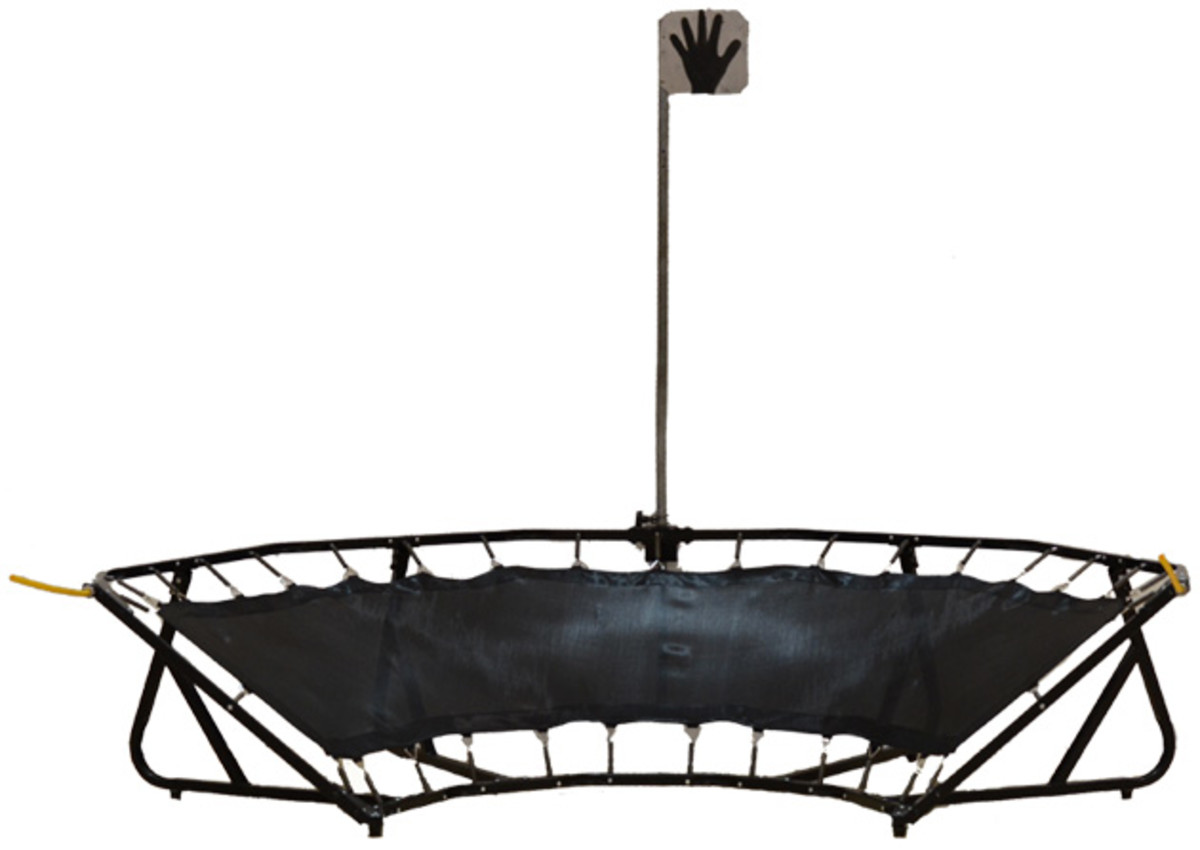Tech Talk: Working out the pros with the Zone 190 basketball training tool

The corner three. Five years ago, while undergoing rehab on a knee injury, professional basketball player Tamir Goodman was lining up a corner three in practice—taking a feed from a mechanical training apparatus—when he realized that the angle was wrong. It wasn't the angle on which he would normally get the ball in a game. He knew that needed to practice as he planned to play, receiving the ball from the proper angle. So even as doctors were telling him that his seven-year pro career was over, something he'd been coming to grips with ever since he injured the knee in 2003, Goodman was lining up a new angle for his life, one focused on basketball training.
What is it?
The Zone 190 looks fairly basic, really. A trampoline-like bed attached by springs to a carbon steel frame, the 190-degree angled device lets basketball players train by themselves—or with teammates—in game-like positions with game-like intensity. The multi-angle capability of the device, says Goodman, enables players to receive passes from a nearly limitless number of angles and then use the device as a quasi-defender. Whether for a catch-and-shoot, passing drill, ball-handling drills or even body positioning, Goodman says the Zone 190 works throughout the scope of a practice.
How does it work?
Created with a carbon steel frame made in Ohio, the Zone 190 angles so that it can easily move around the court and is “unique in that you can use Zone 190 to get the ball anywhere in the paint,” Goodman says. The multi-angle pitch back lets players use it for game-like angles when cutting to the hoop or moving before a shot. A shot-blocker hand and two yellow bars on either end—made from rubbery plastic so they don't hurt when you hit them, but are durable enough to stand up to wear and tear—enhance dribbling drills by forcing players to stay low and in position.
Why’s it significant?
Goodman says the one-dimensional aspect of every other basketball trainer took players out of game-like scenarios. “One of the NBA teams that bought it from me, their coach said players were limited only by imagination,” Goodman says, adding that the Zone 190 allowed players to solo practice what coaches needed them to do in a game.
“If you are a player and know that a play will get you the ball at a certain angle at a certain time of the game, you can replicate that exact scenario on the Zone 190,” Goodman says. “Teams that have bought this are using it in that sense.”
What are the implications in the world of sports/fitness?
A lot of sport-specific training devices have a static feel to them, focusing on repetition of a singular movement or the metrics of a motion. The Zone 190 represents a device that gets players practicing at the same intensity and in the same positions as they would in a competition, a key component to being game ready.

What are the downsides?
Supply has been an issue for Goodman early on. While he worked up the original idea in the plumbing aisles of a Home Depot and created the first prototype in his garage without any mechanical know-how, Goodman hasn’t been able to keep up with demand. As usage increases, we’ll see if his claims of high-quality materials and easy storage live up to expectations.
Who’s using it already?
Goodman would love to list everyone who has signed on, but he is contractually limited. He will tell you in a veiled way that some of the “most famous and leading basketball minds in the NBA and players” use it, train with it and rave about it. While he was “definitely holding in my tears the first time I saw a NBA player use it at practice,” Goodman says the breakthrough occurred at the women’s Final Four last season when a 45-minute on-court presentation allowed Goodman to show off the versatility of his creation.
What’s the future for it?
Goodman says that part of the beauty of the Zone 190 is its ongoing utility for both NBA teams and local junior varsity squads. That said, he’s already busy designing drills specifically for the Zone 190. One NCAA team sent players Zone 190 drills to study when off campus so that when they arrived back on site they could immediately incorporate the Zone 190 into practice. Corner threes and all.
Tim Newcomb covers stadiums, design and gear for Sports Illustrated. Follow him on Twitter at @tdnewcomb.
